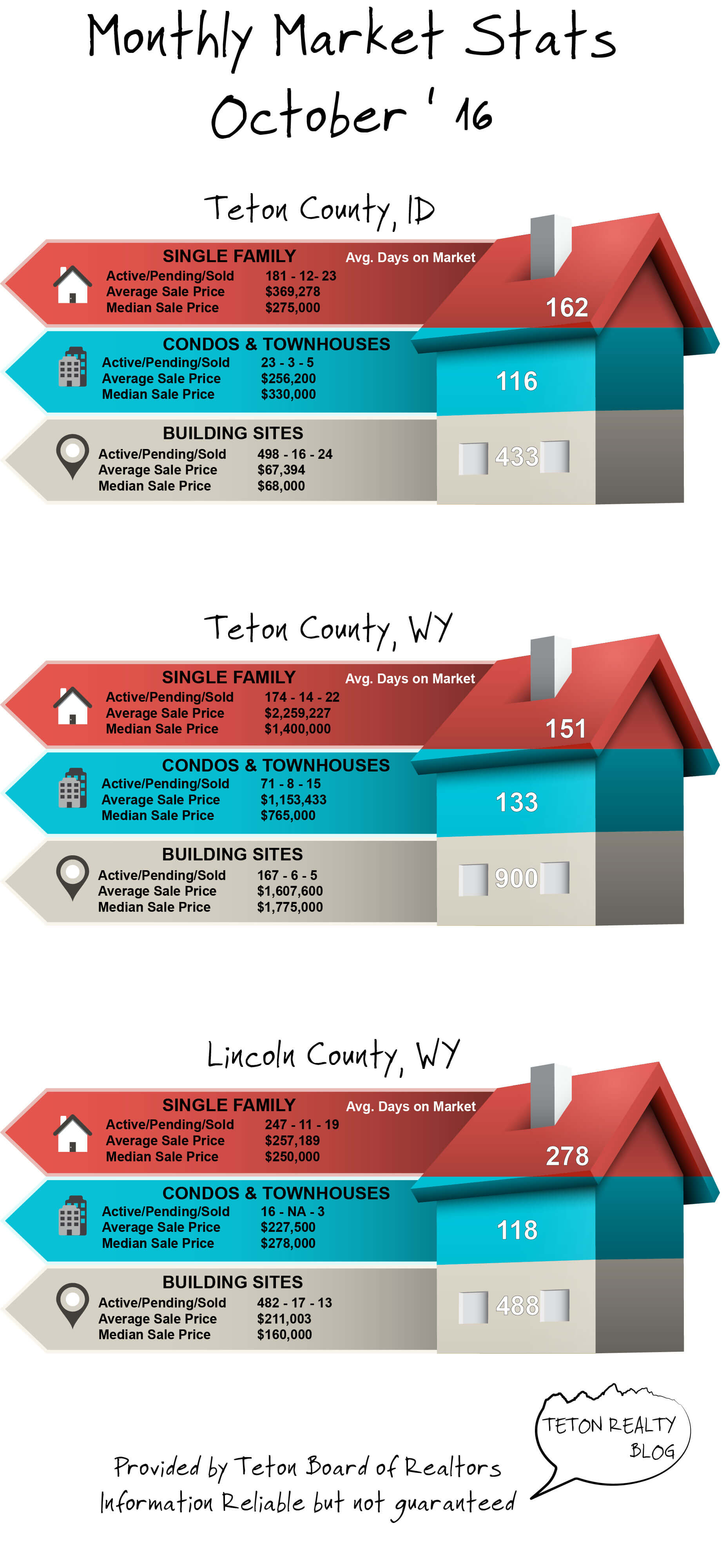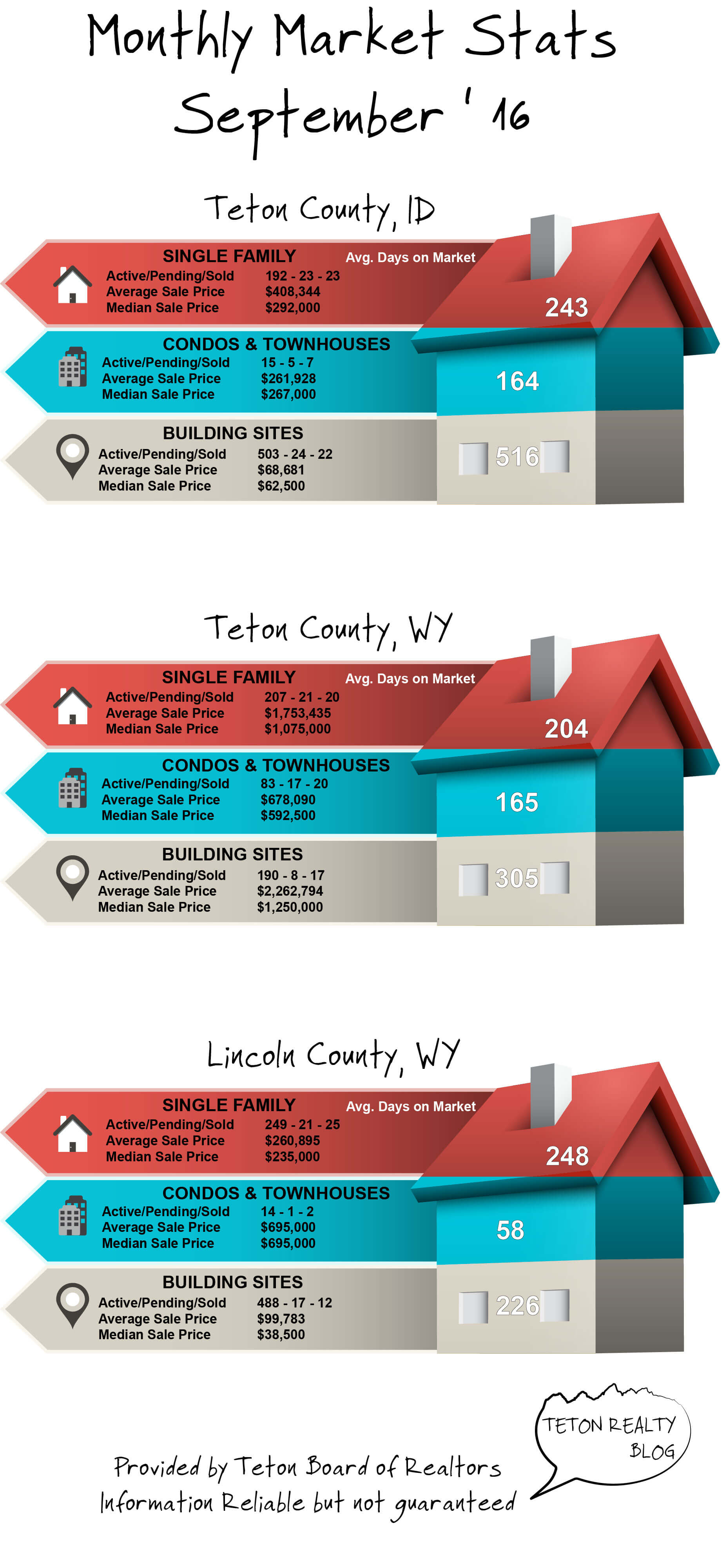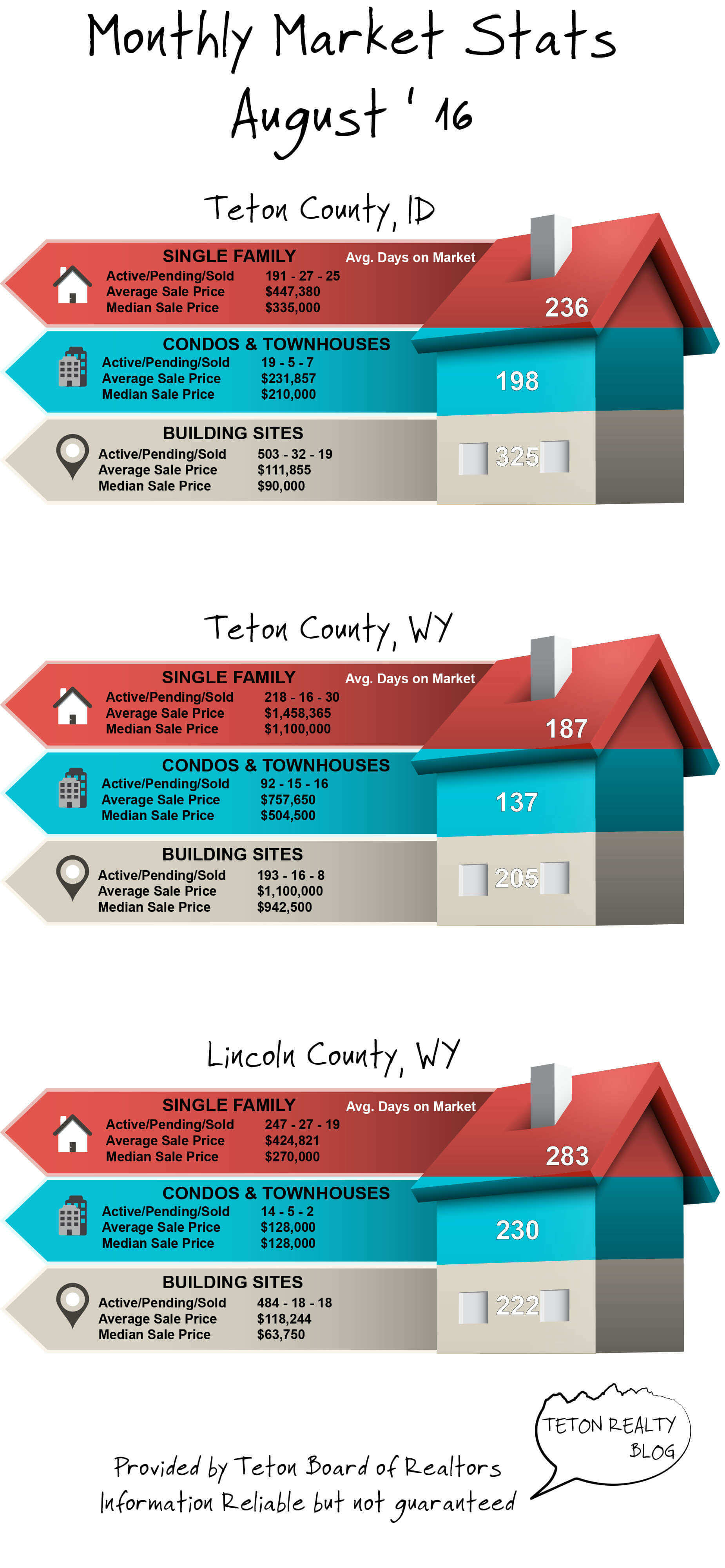Teton County, ID averages sales prices dropped below 400k this month, but still substantially higher than 1 year ago. Inventory has reduced again this month, and sales are on par with last month. Pending sales are reduced, likely as a result of the reduced inventory.
Teton County, WY saw a slight increase in inventory, pending sales and sales. The average sales price dipped below 2mm this month. Building site sales decreased when compared with last month.
Lincoln Count, WY’s market is similar to Teton County Idaho’s with reduced inventory and thus pending sales and sales. Building sites are almost exactly on par with last month in terms of volume, though average prices increased substantially this month.



